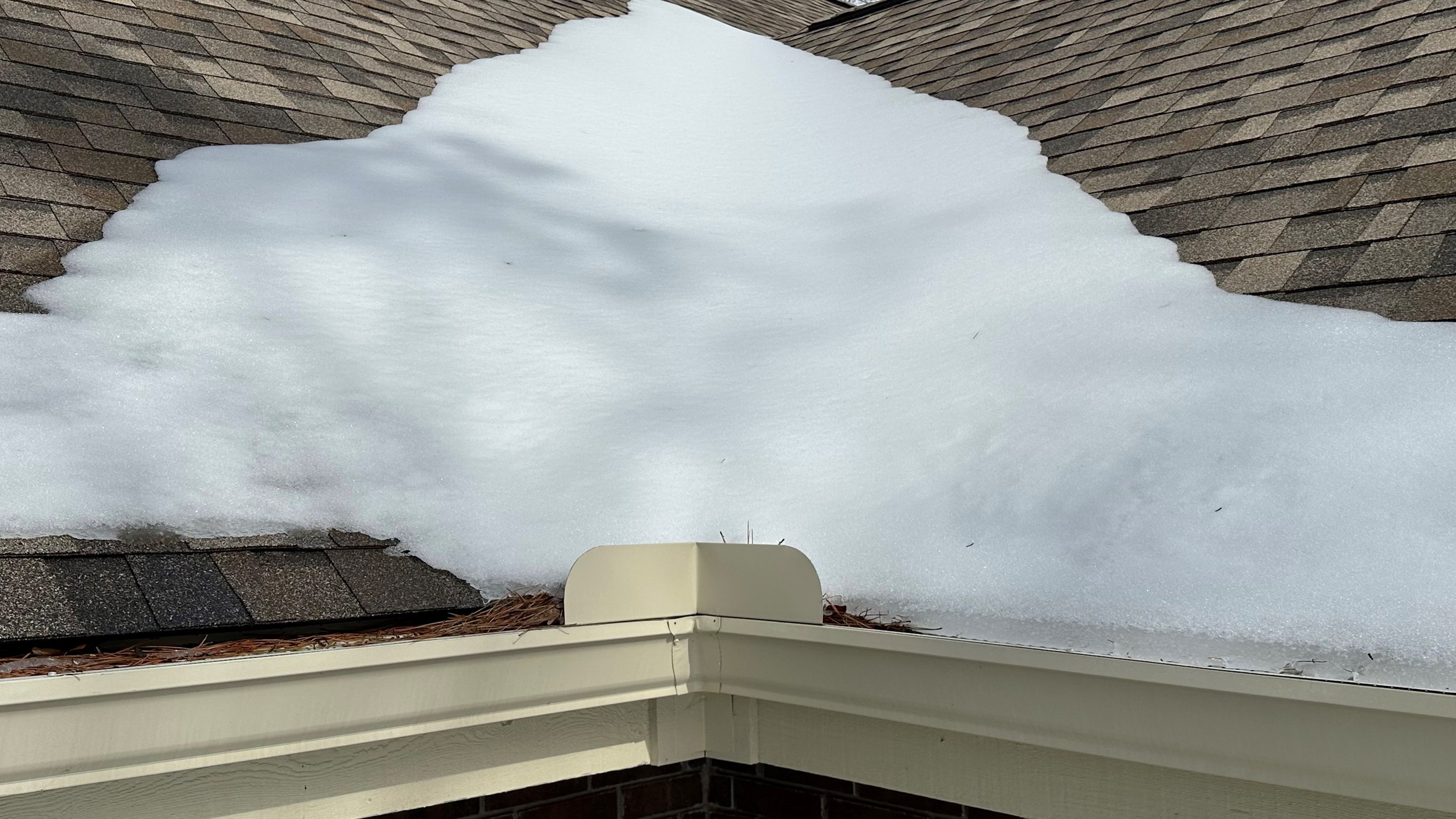Leaks From Ice Dams? - Here’s What To Do About It
Winter weather in Northwest Arkansas can be as fickle as Tom Brady’s retirement decisions. One week in January, we’re ready to pack away the snow shovels and enjoy 60° sweater weather, the next week we’re covered with 5 inches of ice wondering if the Benton County Road Department will ever make it out to our neighborhood. Accordingly, roofs in Northwest Arkansas need to be able to withstand all weather extremes. One common issue we see during these cold months is ice dams.
What Are Ice Dams?
An ice dam forms on a roof when the snow or ice thaws and then re-freezes at the eave or bottom of a roof valley. Warmer temperatures escaping the inside of the home thaw the snow on the higher parts of the slope and then trickles down to the colder overhang of the roof where it re-freezes. With enough snow on the roof, and temperatures plunging back into a deep freeze at night, the process can repeat over several days causing the ice dam to grow. Eventually the problem is big enough to trap the melting water, preventing it from flowing off the roof. The water can then seep up under the shingles and find its way into the the soffits and eventually your ceiling.
How Can You Prevent Ice Dams?
Insulation: This may seem counterintuitive at first, but adding insulation will not only keep you more comfortable, but it prevents that heat you paid dearly for from escaping and melting the snow on the higher slopes of your roof.
Ventilation: Proper roof ventilation is essential not just for removing excess heat in the summer, but also helps maintain a balance of temperature from the eave to the ridge during the winter. You actually want the attic temperature to be as close to the temperature at the eave as possible.
Keep roof clear of excess snow: There may be unique areas on your roof such as low slopes or dead valleys that can accumulate snow drifts. Water build up from the thaw can overwhelm wall flashings and create real damage inside your home. If you are not comfortable accessing these areas, provisional assistance to remove snow may be required. We assisted a customer in Rogers with an ice dam that had close to 3 feet of snow in a dead valley!
Install Ice and water shield: Current building code for roofing in Northwest Arkansas requires that all valleys have some sort of valley lining. While building code also allows the use of rolled metal or rolled roofing, our preference is to use Ice and Water Shield membrane as it acts like a gasket, sealing nails in vulnerable areas.
When properly designed, repaired, and maintained with adequate insulation, ventilation, and Ice and water shield, you shouldn’t have to concern yourself with what the weather decides to do this week or next. You can spend your time worrying about more important things; like whether or not Tom Brady is for real this time.
Contact us today for a free roof assessment.




